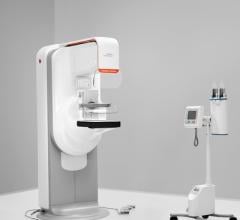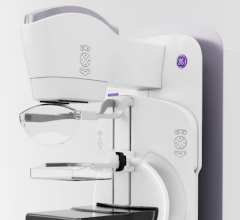
June 26, 2017 — Stephen N. Birrell, M.D., Ph.D., presented breakthrough findings into the reduction of mammographic breast density at the 8th International Breast Densitometry and Cancer Risk Assessment Conference in San Francisco. The conference, co-chaired by University of California San Francisco and Karolinska Institutet, included presentations and posters by researchers from institutions across the world, including the Mayo Clinic and Queen Mary University of London.
Birrell, chief medical officer of HAVAH Therapeutics, undertook a study to examine the effect of the company's T+Ai (testosterone plus aromatase inhibitor) therapy that intends to mimic the effects of tamoxifen by reducing mammographic breast density in pre-menopausal women without perturbations in hypothalamic-pituitary function. One hundred and fifty women undergoing mammographic screening and having high mammographic breast density as determined by a percent volumetric breast density (%VBD) measurement of equal to or greater than 15.5 VBD as measured by Volpara, were randomly chosen for inclusion in the study. A VBD of 15.5 percent is equivalent to a BI-RADS D classification.
The participants were allocated in a non-randomized fashion to either (a) follow-up mammography at 1 year for mammographic breast density calculation or (b) treatment with a subcutaneous pellet of testosterone (60-100 mg) and anastrozole (1-3mg) (dependent on BMI) every 4 months plus a follow-up mammogram for mammographic breast density calculation at 1 year. There were no significant differences in the base-line characteristics of each cohort. Hormone levels were evaluated every 4 months and follicular stimulating (FSH) and luteinizing hormones (LH) were compared from baseline to the same stage of each woman's menstrual cycle 3 months later. Serum anastrozole levels were measured at 1 and 4 months after treatment was commenced.
Seventy-four women were included in the cohort study (2 lost in pre-screening). None were lost to follow-up during the study period. There was a small (2 percent) reduction in mean %VBD in the control group compared to the treatment cohort (19.5 percent). There was no significant change in either FSH or LH. There were no serious adverse events and no androgenicity events resulting in cessation of treatment.
In conclusion, testosterone combined with anastrozole is an effective method of reducing high mammographic breast density in pre-menopausal women. This is achieved by manipulating the amplified hormone catalytic enzymatic system of high mammographic breast density tissue to effect an alteration in the breast tissue estrogen to testosterone ratio; thus inducing a state of breast tissue involution commensurate with that occurring with tamoxifen chemoprevention. This was achieved with excellent tolerance and no adverse effect on hypothalamic-pituitary function.
Birrell's cohort study results were supported by a poster presentation regarding a secondary study on the effect of T+Ai in reducing breast tissue stiffness and breast pain in a cohort of 10 women. A clear signal was observed with all women experiencing a reduction in tissue stiffness and pain of 53 percent and 67 percent, respectively.
For more information: www.havahtherapeutics.com


 December 17, 2025
December 17, 2025 









